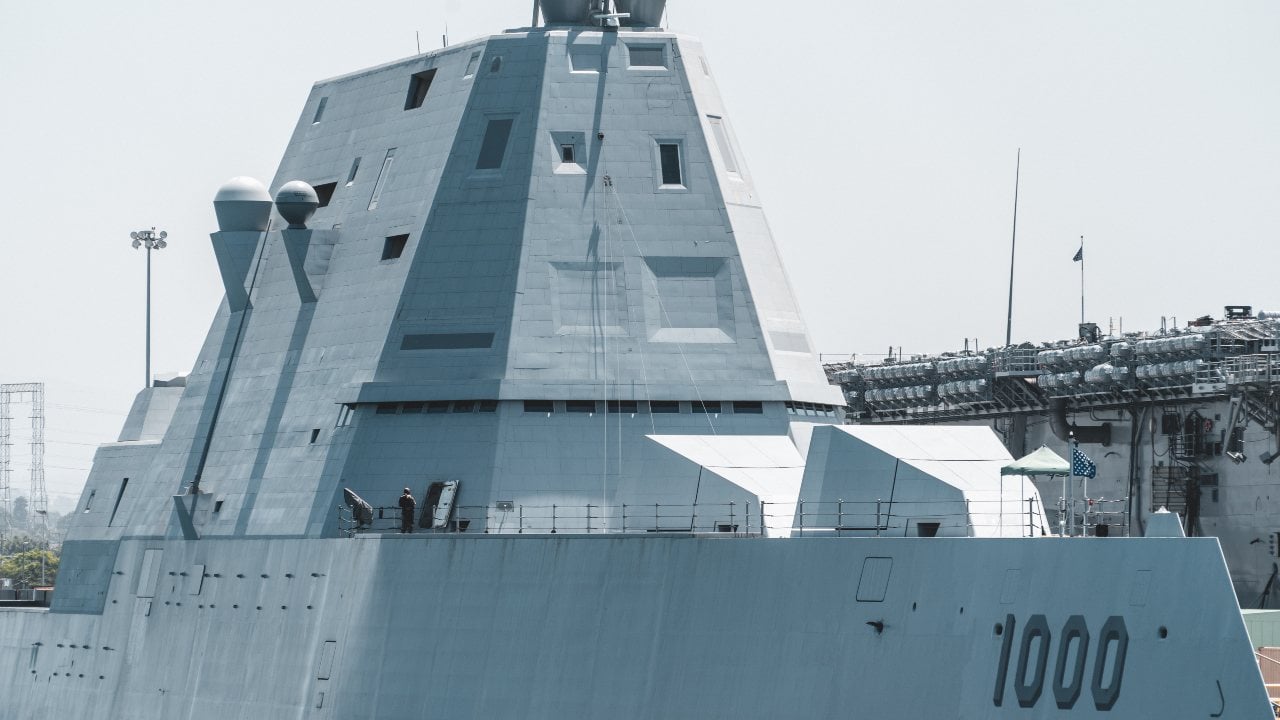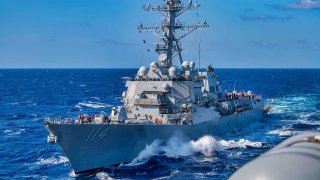The Decline of the U.S. Navy Is Real
The U.S. Navy faces critical challenges as it struggles to meet global demands amid a shrinking fleet and recruitment crisis. With shipyards unable to keep pace with even peacetime needs and a shortage of Merchant Marines to support forward-deployed warships, the Navy’s operational capacity is severely strained.
Summary and Key Points You Need to Know: The U.S. Navy faces critical challenges as it struggles to meet global demands amid a shrinking fleet and recruitment crisis. With shipyards unable to keep pace with even peacetime needs and a shortage of Merchant Marines to support forward-deployed warships, the Navy’s operational capacity is severely strained.
-The Indo-Pacific region, crucial to U.S. interests, is left vulnerable as resources are diverted elsewhere, particularly to the Middle East.
-As China escalates its aggression in the South China Sea, the Navy’s inability to prioritize the Indo-Pacific threatens to undermine America’s strategic position, leaving it at a crossroads in global power dynamics.
U.S. Navy Unable to Meet Global Challenges
The United States finds itself in a geopolitical environment loaded with risk. At the same time, the U.S. military, notably the Navy, is at its smallest size since the Interwar Years.
In the Interwar Years, though, America had an engaged population and latent industrial capacity. Today, American shipyards cannot meet the languid peacetime demand of the Navy. Should a real war erupt, the Navy’s warships will be threatened by sophisticated anti-access/area-denial (A2/AD) systems. If these warships were lost, replacing them in a wartime setting would be nearly impossible.
The Navy & the Merchant Marines are In Decline
Meanwhile, the Merchant Marine, a critical support element for America’s global fleet, is suffering a manpower shortage. As the New York Post reports, “There just aren’t enough Merchant Marines to keep all the ships going at once.”
This is a problem because the forward-deployed Navy warships currently attempting to restore America’s lost deterrence across the arc of Eurasia require Merchant Marine support. If there aren’t enough Merchant Marines to man all the supply ships that the U.S. Merchant Marines operate, there will be severe supply chain complications for a Navy on the brink of global war.
Even more important than the dearth of material support for the Navy is the obvious recruitment crisis that has afflicted the maritime service. Newsweek reported in July of 2024 that, “Through the second month of [Fiscal Year] 2024, active Army and Navy recruitment fell by 30-40 percent short of recruiting goals.”
All branches of the U.S. Armed Forces have been experiencing a grim trend of decline in recruitment over the last decade. These are deep-rooted problems that are only being exacerbated, according to the Newsweek piece by Dennis Laich, by the crisis of trust and government spending on the military.
A Strategic Gap in the Indo-Pacific Has Formed
Carter Johnston of Naval News comes at us with this caustic headline: “No U.S. Navy Aircraft Carriers Deployed in the Pacific.” Johnston’s piece highlights how the “U.S. Navy is facing a shortfall of carriers in the Pacific as the buildup in the Middle East continues. The lack of carriers has left a critical gap in the West Pacific.”
This, at precisely the moment in which the Chinese have decided to ramp up their level of aggression against the Philippines in the South China Sea. Since 2009, Beijing has worked to fashion that body of water into a Chinese-controlled lake. China has fancied itself as the last truly great empire, undergoing a resurgence of sorts. Having been oppressed by the Western capitalists, finally, China will take what is rightfully theirs – or so goes the propaganda.
For China’s ultimate prize, the regime must take Taiwan. If Chinese forces are to have a chance at this, they must reliably secure the surrounding environs. Exerting unchallenged primacy in the South China Sea is one of the final steps on the road to China’s attempt to annex Taiwan.
The U.S. Navy is unable to respond to these threats because it is otherwise engaged, yet again, in the Middle East. This has given Beijing’s forces a relatively free hand to do what they must to secure their grip on the South China Sea.
Hard Choices Require Courageous, Honest Leaders. America Lacks This
America is truly at a crossroads, strategically speaking. It can no longer be the global supercop. Maybe, in the long run, that is a better scenario for the Americans.

Yet getting to that silver lining will take some time. Especially as America’s enemies, sensing vulnerability, continue piling on and straining the American giant, thinking its fall is coming soon.
The Navy must prioritize the Indo-Pacific, even at the expense of Europe and the Middle East.
After all, the majority of America’s top ten trading partners are located in Asia. Thus, the Indo-Pacific is the most important element of U.S. foreign policy. China has built the strongest, largest military in the region and today stands poised to sweep declining American power away, replacing it with the Chinese equivalent of a co-prosperity sphere.
All because the U.S. military cannot perform the variety of mission sets intellectually lazy leaders keep ordering, with no real understanding of the strategic situation.
Author Experience and Expertise: Brandon J. Weichert
Brandon J. Weichert, a National Interest national security analyst, is a former Congressional staffer and geopolitical analyst who is a contributor at The Washington Times, the Asia Times, and The-Pipeline. He is the author of Winning Space: How America Remains a Superpower, Biohacked: China’s Race to Control Life, and The Shadow War: Iran’s Quest for Supremacy. His next book, A Disaster of Our Own Making: How the West Lost Ukraine, is due October 22 from Encounter Books. Weichert can be followed via Twitter @WeTheBrandon.
All images are Creative Commons or Shutterstock.
From the Vault
Russia Freaked Out: Why the U.S. Navy 'Unretired' the Iowa-Class Battleships
Battleship vs. Battlecruiser: Iowa-Class vs. Russia's Kirov-Class (Who Wins?)


